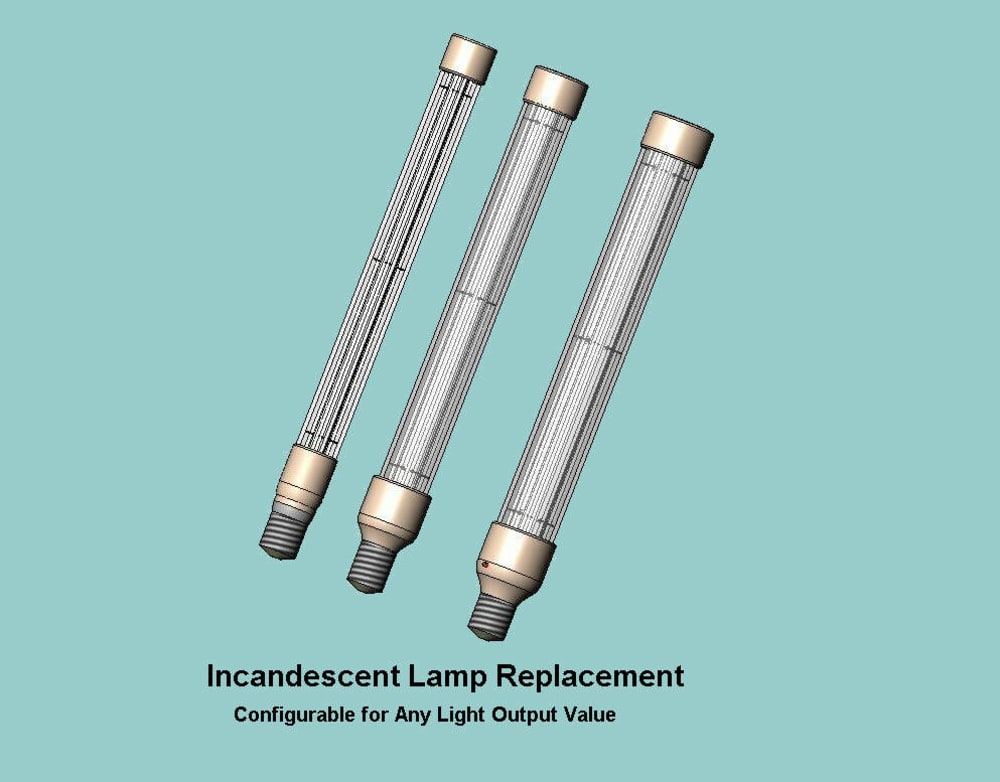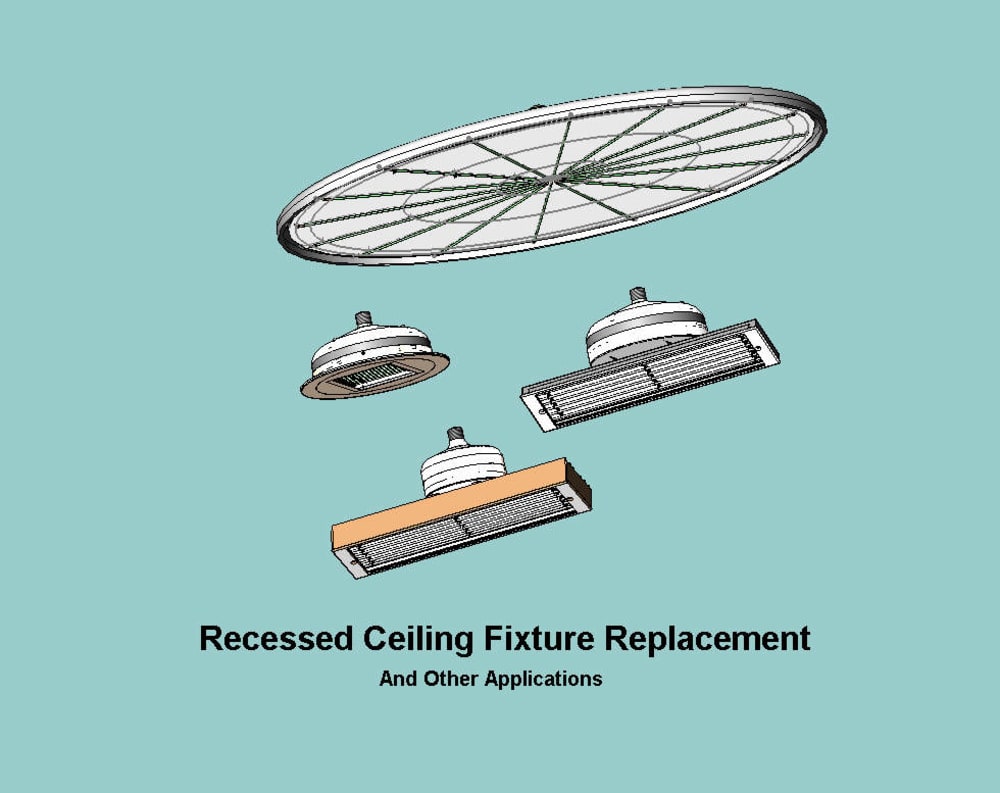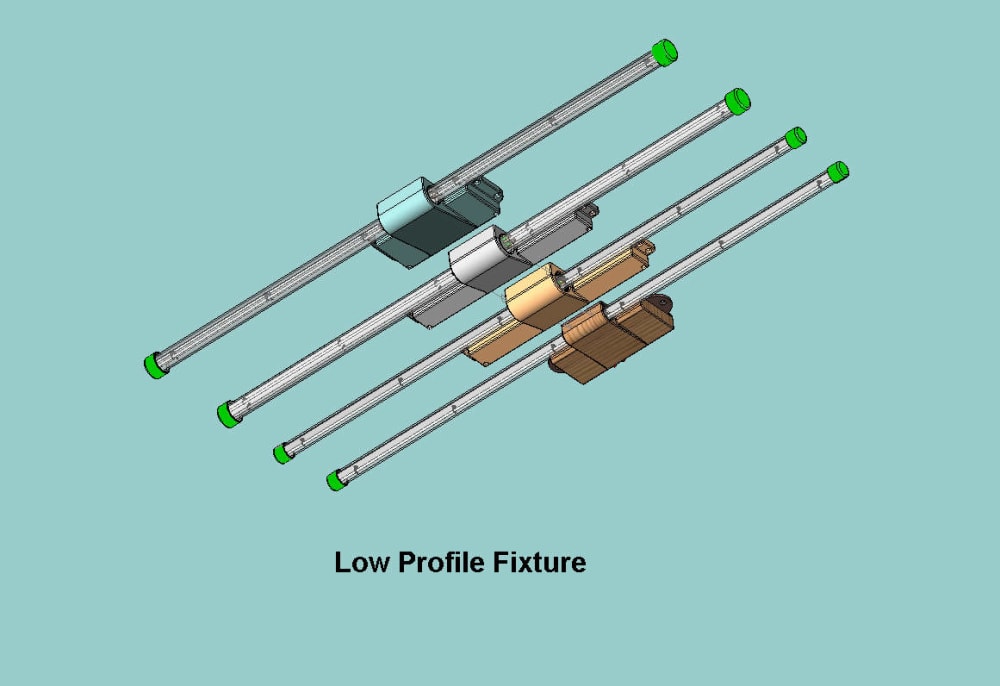The current plan to remove Incandescent Lamps from the worldwide marketplace leaves few alternatives. The most expensive, LEDs, and the most common, Compact Fluorescent Lamps (CFLs), and its associated problems: emission efficiency, slow to start, short life, unacceptable colors, and potential Mercury Contamination. A Versa Lighting’s (AVL) response resulted in the development of Green Star compliant LED alternative light fixtures based on proven Cold Cathode Fluorescent Lamp (CCFL) technology.
The CCFL is a formidable competitor of the Light Emitting Diode (LED), which is very intolerant to heat and voltage changes. Another LED drawback is the necessity to use three (Red, Green, Blue) color die, which combine to make white light, each of which deteriorate at different rates, making it difficult to maintain the desired color. Another option commonly used to obtain white light from a LED, is to use a UV/blue light emitting LED coated with white light emitting phosphorus. The viewing angle poses optical and thermal management challenges.
Compared with LED, the CCFL is already a mature light source. The maturity of CCFLs is proven by the long lifespan of LCD backlights. As the backlight of LCD TVs, most of the lamps now assure a minimum lifespan of 80,000 hours and 100,000 on and off operations. CCFL’s will operate in a wide temperature range -40C to +85C, have a tolerance to variable power level changes of +/-15%, and unlimited color choices, with no color deterioration, and start within 1/40,000 sec. The efficiency of CCFL’s presently is 60 lumen/watt with expected growth to increase to 90 lumen/watt.
CFL design restricts light dissipation as the adjacent coils obstruct the light of each other, reducing emission efficiency. Achievement of an even coating of phosphorus on the inside of the circular structure is difficult, shortened lamp life is a result of filament deterioration. The concern regarding Mercury contamination if a CCFL, within the light engine becomes broken is mitigated by absorbent material within the hermetically sealable envelope, facilitating recycling of the mercury and securing the environment.
The design configuration of our lamp assembly configuration enables the light engine to be replaceable, reutilizing the driving circuitry. Use of optically optimized highly efficient components and micro processor supervisory control enables: dimming, remote control, and easy integration into smart energy management systems.
Although AVL’s light engines can be powered from grid connected electrical systems, they exhibit the same efficiency profile with alternative power sources, such as batteries charged from Solar, Wind, Water power sources. Utilizing this technology allows affordable lighting to be applied with great diversity, powered from sources not considered in the past, without intermediary power converter systems that waste energy, and reduce overall system efficiency.
It is this versatility that allows adaptation in emerging and developing markets, where the UN has noted that 1.8 Billion people do not have access to electric power, and use conventional forms of illumination, such as Kerosene lanterns, are expensive, a health hazard, source of pollution, and source of carbon emissions.
Like this entry?
-
About the Entrant
- Name:Fred Elvin
- Type of entry:individual
- Hardware used for this entry:Shop made toolingSoftware used for this entry:Photostacker Pro 2D drawing
- Patent status:patented








